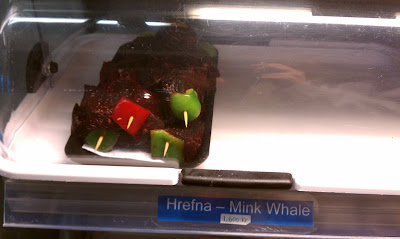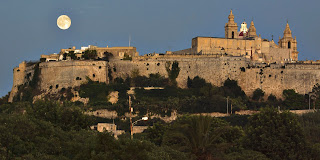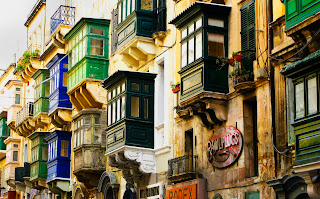 |
| BY GEORGE: Grenada's picturesque capital, St. George's |
WHEN Hurricane Ivan brought death and destruction to Grenada in September 2004, killing 39 people, damaging or demolishing 90 per cent of the buildings and wiping out the vital nutmeg/mace and other spice crops, it looked like curtains for this tiny Caribbean island’s economy. Best-case predictions said it would take decades to recover, but just over seven years later and against the odds, tourism numbers are on the up and spice exports are back to pre-Ivan levels.
International aid allowed the islanders to begin repairing and replacing homes, schools and other public buildings flattened by Nature’s fury, which paid a return visit in July 2005 when Hurricane Emily hit. It was a cruel double blow, but no one had reckoned on the indomitable Grenadians, who spent every daylight hour replanting the vast tracts of nutmeg, all spice, cinnamon and clove trees and pepper vines on which so many livelihoods depended.
They showed that when the going gets tough, the tough get growing.
 |
| TOP CROP: Nutmegs and other spices |
You have to be tough to sample the rum that’s been produced since 1785 at the Rivers distillery in the northeast of the island. There are two varieties, 69 and 75 proof, the latter so flammable and potentially explosive that it’s not allowed on planes, except maybe in the fuel tanks.
The distillery, on the River Antoine Estate that supplies organic bananas to Sainsbury’s, is a ramshackle collection of old buildings that look long-abandoned, but behind the weather-ravaged walls it’s a fully-functioning and busy facility that makes rum year-round. The only concession to the 21st century is electricity, but it plays no part in the production process — a water wheel powers the press that crushes the sugar cane, the sun-dried husks are burned beneath huge copper basins to boil the cane juice, the hot liquid is ladled into cooling tanks, it’s then siphoned into concrete fermentation tanks and, finally, it’s hand-pumped into and out of the stills. This is how it’s been done for 227 years, and there are no plans to introduce modern methods.
I visited Rivers with award-winning tour guide Simon ‘Mandoo’ Seales (www.grenadatours.com), a former merchant seaman (he’s one of the Navy Seales) who returned to his native Grenada several years ago to help promote tourism. I couldn’t have been in better — or better-dressed — company as Mandoo, in his pristine white uniform, took me on a tour of the Caribbean’s Spice Island which measures just 34 by 19 kilometres (half the size of the Isle of Man) and has a population of 90,000 English-speaking cricket lovers. They’re all Formula 1 fanatics too, thanks to race ace Lewis Hamilton’s Grenadian roots — his grandad, Davidson, is the bus driver in the fishing village of Grand Roy, where he’s affectionately known as Slowcoach.
 |
| HAIRY MOMENT: Mona monkey has lunch |
Mandoo’s a man of many talents, not least his ability to talk to the animals which he showed off when we stopped to enjoy the views from the heady heights of the steamy Grand Etang rainforest. I had my eye on the bag of bananas he’d bought from a roadside kiosk on the way up, but it turned out they were earmarked for a more deserving cause. Leaning on a railing, he threw his head back and let out a Tarzan-like yodel. If he’d thumped his chest, grabbed a liana and gone swinging into the greenery I couldn’t have been more startled.
A few seconds later a mona monkey came running along and plopped itself down right in front of us. The last time I was that close to a simian was in Gibraltar, where a Barbary macaque picked my pocket and peed on my shoe, so I wasn’t overly keen when Mandoo handed me a banana and suggested I give it to the monkey. But I needn’t have worried — this little guy had obviously been brought up well, and he accepted my arm’s-length offering with a gracious grunt before ambling back into the trees, no doubt to tell the lads about the big jessie with the sunburn and the trembling hand.
And then, without so much as a few warning drops, it began to rain as if someone had turned on the taps full blast, though in Grenada they don’t call it rain (it’s warm for a start). “That’s liquid sunshine,” said Mandoo, and in three words summed up the good-naturedness of the ever-smiling Grenadians. Ten minutes later the downpour ended as suddenly as it had begun, and we were rewarded with the marvellous sight of a double rainbow.
 |
| COOL POOL: Concord Waterfalls |
There was a rainbow too, a mini one, when we stopped at the first of the three Concord Waterfalls, 13km north of the capital, St. George’s. The lower falls are at the end of a narrow, winding mountain road hugged by lush vegetation, and most visitors content themselves with a quick look and a few snapshots here. The more adventurous and fit trek into the rainforest and through a nutmeg plantation to see the second falls, Au Coin, and continue upwards to the third, Fontainbleu. None is a Niagara, but all three are picturesque and tumble into deep pools of crystal clear water that tempt the brave in for a dip (the pools can be a bit chilly, while the sea close to shore is lukewarm).
The really adventurous don swimming gear, safety helmets and lifevests for a 90-minute ride down the Balthazar River rapids (www.adventuregrenada.com) on individual inflatable tubes that resemble giant donuts but taste awful (I took a tumble and got a wallop in the mouth from mine). There are gentler stretches with pools where you can climb the bank and jump into the water, but I left that bit of daredevilry to the 12-year-old girl from the States who not only jumped but did a somersault and landed feet-first in the middle of her tube. Impressive stuff, though I had to stifle a snigger (her dad was a big fella with tattoos) when her startled little face followed the rest of her through the hole and she surfaced a few seconds later coughing and spluttering. As any fool knows, if you’re going to show off by somersaulting into a rubber ring, keep your arms outspread and don’t shout “Watch me, everybody!”
Guides-cum-lifeguards accompany tube riders who are advised to bring a towel, but that proved to be excess baggage because 10 minutes after stepping ashore in my sodden shorts and T-shirt they’d dried in the sun with me still in them.
 |
| THRILLS (AND SPILLS): Tubing on the Balthazar River |
Grenada, which prides itself on being the cleanest, greenest and most law-abiding island in the Caribbean, is hot, with a year-round average afternoon temperature of 23C/80F and daily highs from July through October of, and often exceeding, 31/88. November through February are the coolest months (if you call 24/76 cool), January through May are the driest and the rainy season is June to November, though it usually rains just once a day for an hour and then not every day. With such an agreeable climate it’s ideal for beach weddings and honeymoons and is an increasingly popular holiday destination, but being only 190km north of the Equator the sun is twice as intense as in the Mediterranean, so regular and generous applications of sunscreen — or in my case, axle grease — are a must.
I’ve never been one for beaches (beach bars, yes) and all that lying and frying on the sand, but the ones in Grenada look like they came straight out of a Bounty bar commercial. I strolled the three-kilometre length of Grand Anse beach in the southwest of the island, hot-footing it into the turquoise water at regular intervals to prevent my flip-flops melting, and concluded it must’ve been idyllic surroundings like this for which postcards were invented.
 |
| SHOREFIRE HIT: Picture postcard Grand Anse beach |
Levera Beach, in the north, is a smaller version of Grand Anse at 700 metres long but just as dreamy, and for nature lovers such as Mandoo it’s something of a sacred site. Every year between April and July, female leatherback turtles come here to bury their soft-shelled eggs — from 80 to 100 each — in the sand on the very beach where they themselves hatched several years before. These critically-endangered creatures, which can weigh up to 900 kilos and grow to two metres in length (the males are much bigger and spend their entire lives at sea), undertake an epic 12-month migration of up to 6,000 kilometres each way from and back to Grenada and are absolutely pooped when they drag themselves ashore.
This is when Mandoo — who gives up much of his free time to lecture on environmental issues in schools and colleges — and his fellow conservation volunteers step in to lend a helping hand, working in round-the-clock shifts to protect the turtles from poachers and guard the nest sites while the eggs incubate. Access to Levera between April and July is strictly limited, though small groups of visitors can join the volunteers to see the females laying and their tiny hatchlings — of which only one in a thousand survive to maturity — scurrying down the beach and into the sea.
 |
| SHELL OUT: Fun and food at Fish Friday night in Gouyave |
No one does much scurrying or hurrying in Grenada, where life is so laid-back it’s almost horizontal. This was delightfully evident when I visited the northwest seaside town of Gouyave for the weekly Fish Friday evening when locals turn out to eat, drink and socialise with their neighbours and tourists in the backstreets while Bob Marley monopolises the music blaring from the speakers. Once a week, these traffic-free, narrow residential alleyways are turned into a maze of open-air canteens with umpteen stalls serving succulent seafood that costs next to nothing, cheap soft drinks and beer, and rum punch so potent it might strip the enamel from your teeth if you over-indulge.
Dress down for this most informal of nights out that sometimes goes on until dawn (Gouyave is known as the town that never sleeps) because boiled, baked, barbecued, grilled and fried fresh fish, crayfish and lobster accompanied by spicy vegetables and fried breadfruit are meant to be tackled with fingers, not forks. When you can’t find a serviette, wipe your hands on your T-shirt — you can always wear and wash it when you go for a dip in the sea the following morning.
The waters around Grenada attract scuba divers from all over the world thanks to the abundance of coral reefs and wrecks that teem with marine life including seahorses, shoals of angel fish, schools of snappers, graceful stingrays and curious (as in fearlessly nosy) turtles. Not that I’ve been down there to have a look, which is my loss — I’m not a strong swimmer; I gagged the first and only time I bit on a breathing regulator; and I’ve had a morbid fear of sharks since a German woman was killed by one off Sharm el-Sheikh in December 2010 near the spot where I’d been treading water only a fortnight before. There are NO dangerous sharks off Grenada, but that fatal attack in Egypt has left me with a terrible dread, so when it comes to scuba diving I have to say thanks, but no tanks.
 |
| SCUBA-DUPER: Diving among the island's coral reefs |
I stayed at LaSource (www.theamazingholiday.com), the all-inclusive, no-children-allowed resort on Pink Gin Beach near St. George’s where I spent seven blissful days and nights thinking: If I win the lottery this is where they can forward my mail.
This 4-star plus hideaway in 40 acres of tropical grounds is hugely popular with singles, and many a lasting relationship has been forged here. What’s especially nice is that anyone arriving on their own will never feel alone — get-to-know-you drinks are served in the bar every evening and solo guests are invited to join others for dinner. And, joy of joys, there’s not a distracting TV in sight, not even in the rooms, all of which overlook the Caribbean. Sitting on my balcony most evenings, I watched the sun sink beneath the horizon in a blaze of red and orange before getting dressed for dinner with a fascinating and friendly mix of mostly English singles and couples, many of them LaSource regulars, from all walks of life — accountants, restaurateurs, secretaries, doctors, a redundant computer games designer, honeymooners and retirees.
Some were there simply to chill out and enjoy the surroundings and fabulous food followed by a relaxing evening in the piano bar, while others took full advantage of the wealth of leisure facilities and organised activities. There’s a nine-hole golf course, tennis courts, archery, beach volleyball, t’ai chi and yoga (watching a meditation class was as active as I got), and watersports including snorkeling, knee boarding, ocean kayaking, windsurfing and Hobie Cat sailing. The resort has its own scuba boat and crew (www.divelasource.com), and guests who are certified divers get three outings per week included in the price of their stay. Also included for all guests is a complimentary daily spa treatment with a choice of facials, massages and body wraps.
A recent addition to the attractions at LaSource is the week-long Sleep School (www.thesleepschool.org) that aims to help insomniacs get a good night’s kip. Run by Dr. Guy Meadows, who claims an 87 per cent success rate, it’s attracting interest from all over the world. Thankfully, I’ve never had any trouble dropping off, though I’m not looking forward to my next nine-hour Grenada-Gatwick flight — all those cured insomniacs who haven’t slept in ages have a lot of snoring to catch up on.
 |
| HAVEN ON EARTH: Fabulous all-inclusive LaSource resort |
GETTING THERE
FLY: British Airways (www.britishairways.com), Virgin Atlantic (www.virgin-atlantic.com) and Monarch (www.monarch.co.uk) fly from London Gatwick to Grenada.
BOOK: For Irish clients, Tropical Sky has a 7 nights all-inclusive holiday at LaSource from €1,899 per person sharing. Valid for selected departures from June to September, the price includes scheduled flights from Dublin via Gatwick, accommodation in a luxury room, resort transfers, taxes and surcharges. In Ireland, see www.tropicalsky.ie or call 01 526 2566 or 068 56800; in the UK see www.tropicalsky.co.uk or call 0844 332 9371.

















